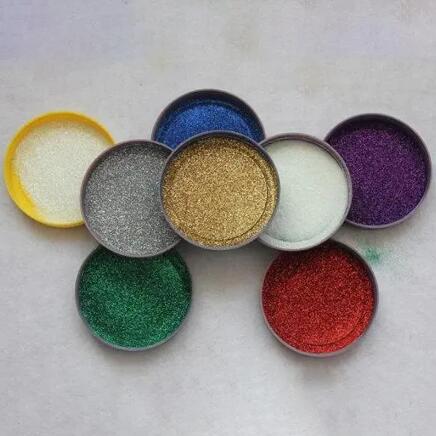The Sparkling World of Glitter: History, Types, and Uses
2024-07-19
Introduction
Glitter has long been associated with fun, festivity, and glamour. From arts and crafts to makeup and fashion, this sparkling substance has a wide range of applications that add a touch of sparkle and shine to everyday life. But what exactly is glitter, and how did it become such an iconic material? In this blog, we'll explore the history, types, and various uses of glitter.
The History of Glitter
Glitter's origins can be traced back to ancient times. Early forms of glitter were made from naturally occurring minerals such as mica, malachite, and hematite. These minerals were ground into powder and used by ancient civilizations like the Egyptians to adorn their bodies, clothing, and artifacts.
The modern glitter we know today was invented in the early 20th century by Henry Ruschmann, a German immigrant living in New Jersey. Ruschmann developed a method to cut scrap materials, including plastics, into small, reflective particles. This invention marked the beginning of the mass production of glitter and its widespread use in various industries.
Types of Glitter
Glitter comes in a variety of shapes, sizes, and materials, each suited for different applications. Here are some of the most common types:
1. Craft Glitter: This is the most widely used type of glitter, available in numerous colors and sizes. It's typically made from plastic and is used for arts and crafts projects, decorations, and school activities.
2. Cosmetic Glitter: Made from non-toxic materials, cosmetic glitter is designed for use on the skin and hair. It's commonly found in makeup products, body lotions, and hair sprays.
3. Holographic Glitter: This type of glitter has a rainbow effect, reflecting different colors depending on the angle of light. It's popular in nail art, fashion, and party decorations.
4. Biodegradable Glitter: An eco-friendly alternative to traditional plastic glitter, biodegradable glitter is made from plant-based materials such as cellulose. It's designed to break down naturally in the environment, reducing pollution.
Uses of Glitter
Glitter's versatility makes it a popular choice across various industries. Here are some of its most common uses:
1. Arts and Crafts: Glitter adds sparkle to paintings, sculptures, and DIY projects. It's often used in greeting cards, holiday decorations, and school projects.
2. Fashion and Accessories: Designers incorporate glitter into clothing, shoes, and accessories to create eye-catching, glamorous looks. Glittery fabrics, bags, and jewelry are popular fashion statements.
3. Cosmetics and Beauty: Glitter is a staple in the beauty industry, used in eyeshadows, lip glosses, nail polishes, and body lotions. It's also a favorite for festival makeup and body art.
4. Events and Decorations: Glitter is synonymous with celebration. It's used in confetti, balloons, table centerpieces, and other party decorations to add a festive touch.
5. Entertainment: Glitter is a key component in the entertainment industry, used in stage costumes, props, and set designs. It's also popular in music videos, photo shoots, and film productions.
Conclusion
Glitter has a rich history and a diverse range of uses that continue to evolve. From ancient civilizations to modern-day celebrations, glitter has always been a symbol of joy and extravagance. Whether you're creating a piece of art, designing a fashion accessory, or adding some sparkle to your makeup, glitter offers endless possibilities to express creativity and bring a touch of magic to everyday life.



